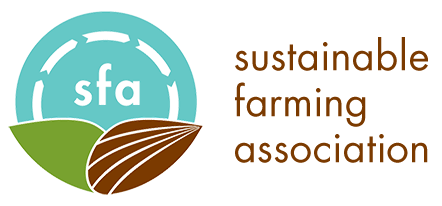A View from the Summit, Part 2
 Recently, I shared some moments from the first day of our Midwest Soil Health Summit. Our second day was more tailored to crop and livestock farmers, and it was a delight to see over half of our guests attend both days, regardless of their focus. There’s always something to learn.
Recently, I shared some moments from the first day of our Midwest Soil Health Summit. Our second day was more tailored to crop and livestock farmers, and it was a delight to see over half of our guests attend both days, regardless of their focus. There’s always something to learn.
Featured speaker Rick Clark, a fifth-generation farmer from Indiana, started the day by presenting on the soil health practices that he and his family implement on 7,000 acres. They grow a “cash crop rotation of corn, soybeans, and wheat” and some alfalfa. Planting diverse cover crops is just one key tool they use towards their goal of being both organic and no-till.
A whirlwind of informative breakout sessions followed. Here are some gold nuggets from a handful of them:
Alternative Grazing Enterprises — “If it’s worth doing, it’s worth measuring.” Farmer and SFA Grazing Consultant Doug Voss recommends taking photos of sites before and after you integrate livestock so that you can clearly see how much and how quickly you are seeing the changes and benefits of grazing.
Economics of Silvopasture — Graduate Student Kalvin Moschkau demoed a new digital tool he is building out to help potential and existing silvopasture practitioners make decisions around labor, fencing, finances, environmental benefits, and much more. Stay tuned—we’ll be sure to let you know when the tool officially launches.
Progress on Developing Kernza® Perennial Grain as a Soil Health Solution — As Ben Penner, VP of the Perennial Promise Growers Cooperative, said in his presentation, “Minnesota is blessed with good soil, good people, and a world-class research institution.” A robust network of people with remarkably diverse backgrounds and expertise has been growing around this perennial for years, and the momentum is palpable in Minnesota.
Soil Health Research in Minnesota: Learning from Local Data — PhD Candidate Hava Blair presented the results of a multi-year study of soil health data from Minnesota farms. The findings back up the Soil Health principles, while showing that regional context matters. Further research is needed to explore the variables at play.
If you’re interested in exploring these topics, some of the speakers have shared their slides with us. Find them on our Summit homepage.
TL;DR — check out this video recap of the Summit from AMS Digital Productions below.
